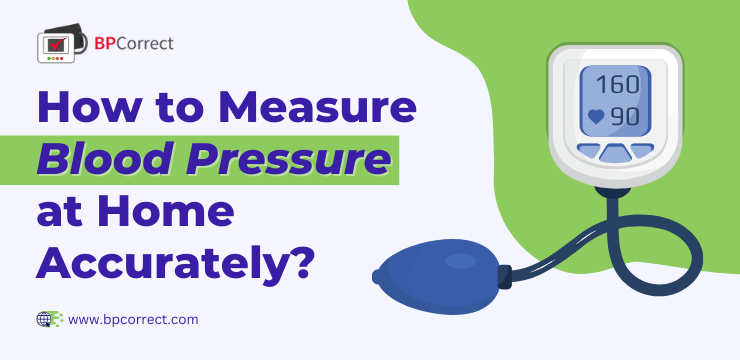In today’s fast-paced and busy life, no one has enough time to go to their doctor to get their BP checked. However, measuring blood pressure at your home is not as simple as it sounds. One wrong step and you will end up measuring and sending inaccurate readings to your doctor, which can be harmful to your health as your doctor might say that there is nothing to worry about but an underlying disease might be there. So, today, we will provide you with the proper way to measure BP at home.
3 Steps to Accurately Measuring Blood Pressure at Your Home
To accurately measure blood pressure, you just need to take care of a few things, which we have mentioned here. Plus, we can assure you that this information has been verified by certified medical experts. So it’s 100% correct. With that being said, let’s get right into what’s essential.
1. Choosing a Blood Pressure Device
Before measuring blood pressure at your home, you need the correct equipment. By equipment, we mean the best BP monitoring device. As per the recommendations of the American Heart Association (AHA), you need to and can only use BP monitors that have been validated and approved by authorities. Currently, 3 websites are 100% legitimate that list these devices.
- Stride BP is an agreement between the European Society of Hypertension (ESH), the International Society of (ISH), and the World Hypertension League (WHL).
- Validate BP is an organization, which the American Medical Association (AMA) has funded.
- dabl is an education trust.
Read Also: The Future of Patient Care: Technology-Enabled Practitioner Support
2. Preparation & Positioning
The next step to measure your BP readings is to prepare and correctly position yourself. A few things we would recommend you to do include:
- Not doing strenuous activities, drinking caffeine and/or alcohol, or smoking 30 minutes before reading your BP. Also, ensure that your gall bladder is empty.
- Sitting straight on a chair with your arms on a table or the armrest of the chair itself. Relax for at least 5 minutes before measuring your BP.
- wrap the cuff around your arms 1 inch above your elbow crease, levelling your arm with your heart.
- Measure your BP twice between a 60-second interval. That is if you know how to.
3. Monitoring Schedule
Another thing to remember before monitoring blood pressure at your home is to follow the recommendations of the American Heart Association (AHA). The guidelines say that you need to take 2 readings between a minute in the morning and evening for a week. That’s ideally 4 readings for 7 days. However, a minimum of 3 days is also fine. Here are a few things to consider here.
- The average of all these readings is the base for analysis.
- A general rule of thumb is to measure BP consecutively (in days). However, non-consecutively is also fine.
- We strongly suggest repeating this schedule every few weeks or if your doctor prescribes a new treatment.
- If your BP is stable for a few months, reducing the measuring frequency is a good idea.
12 Things to Remember When Measuring Blood Pressure at Your Home
Here are a few more tips and a revision of what we learned about home BP measurement.
- Ensure that your bladder is not full before measuring your blood pressure.
- We strongly suggest you not intake coffee, alcohol, smoke, or do strenuous activity such as exercise 30 minutes before measuring your blood pressure.
- Identify a comfortable and peaceful place for sitting down.
- Sit straight on your chair.
- Your feet must be on the floor and avoid crossing your legs.
- Place your arm on a table or chair arm. Ensure that the middle of the cuff is equalised with your heart.
- Ensure that it is the right size for your arm.
- Wrap it around your upper arm one inch above your elbow crease (ensure to wear a short-sleeved or no-sleeve shirt as rolling up your sleeves will change your blood pressure, which will affect your readings).
- Relax for a minimum of 5 minutes before taking your BP reading.
- Moving or talking during the process will give incorrect results.
- For the most accurate results, we recommend taking 2 readings between 1-minute intervals.
- Consistently record your readings at the same time every day.
Read Also: Effortlessly Share Your Blood Pressure Data with the BPCorrect App
How Can BPCorrect Help You in Accurately Measuring Blood Pressure at Your Home?

BPCorrect is a BP monitoring app for patients, which not only accrues measuring blood pressure at your home but also simplifies sharing it with your doctor. Here’s how.
- The app for blood pressure management synchronizes between 1-2 minutes with your home BP monitor.
- It calculates the average of all your BP readings.
- You can directly send these values to your doctor from anywhere using the blood pressure monitor app.
- The application also provides you with tutorials and links to information regarding BP measurement.
- It reminds you to regularly measure your BP within the monitoring cycle.
Conclusion
So we finally understood the correct way of measuring blood pressure at home. We can say that in today’s busy life, visiting doctors now and then to get your BP checked is next to impossible. However, we can also say that properly measuring and monitoring your BP at home is not a complex process as long as you follow the right steps. You need to just be careful and take all precautions and use apps like BPCorrect. Although, these measurements are reliable, a word of warning before you go. The decision of your doctor is final and their suggestions and recommendations must be strictly followed.
Frequently Asked Questions (FAQ)
Q. How to Accurately Measure Blood Pressure at Your Home?
Ans. Follow these 3 steps to accurately measure your blood pressure.
- Use only AHA-approved BP monitoring devices.
- Take care of the recommended preparations and sitting posture before taking your BP reading.
- Follow all the rules such as 2 readings between a minimum gap of a minute to get accurate BP readings.
- We recommend following the BP measuring schedule as recommended by AHA.
Q. What are the Things to Remember When Measuring Your Blood Pressure?
Ans. You need to remember these few things before reading your blood pressure from your home.
- Ensure that your bladder is not full before measuring your blood pressure.
- We strongly suggest you not intake coffee, alcohol, smoke, or do strenuous activity such as exercise 30 minutes before measuring your blood pressure.
- Identify a comfortable and peaceful place for sitting down.
- Sit straight on your chair.
- Your feet must be on the floor and avoid crossing your legs.
- Place your arm on a table or chair arm. Ensure that the middle of the cuff is equalised with your heart.
- Ensure that it is the right size for your arm.
- Wrap it around your upper arm one inch above your elbow crease (ensure to wear a short-sleeved or no-sleeve shirt as rolling up your sleeves will change your blood pressure, which will affect your readings).
- Relax for a minimum of 5 minutes before taking your BP reading.
- Moving or talking during the process will give incorrect results.
- For the most accurate results, we recommend taking 2 readings between 1-minute intervals.
- Consistently record your readings at the same time every day.
Q. How Can BPCorrect Help You Accurately Measure Blood Pressure?
Ans. BPCorrect not only accrues home BP measurement but also simplifies sharing it with your doctor. Here’s how.
- The app for blood pressure management synchronizes between 1-2 minutes with your home BP monitor.
- It calculates the average of all your BP readings.
- You can directly send these values to your doctor from anywhere using the blood pressure monitor app.
- The application also provides you with tutorials and links to information regarding BP measurement.
- It reminds you to regularly measure your BP within the monitoring cycle.



